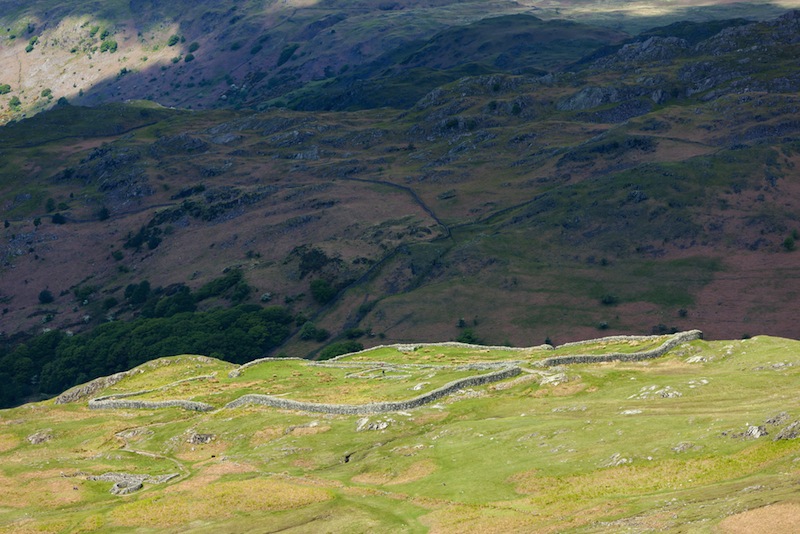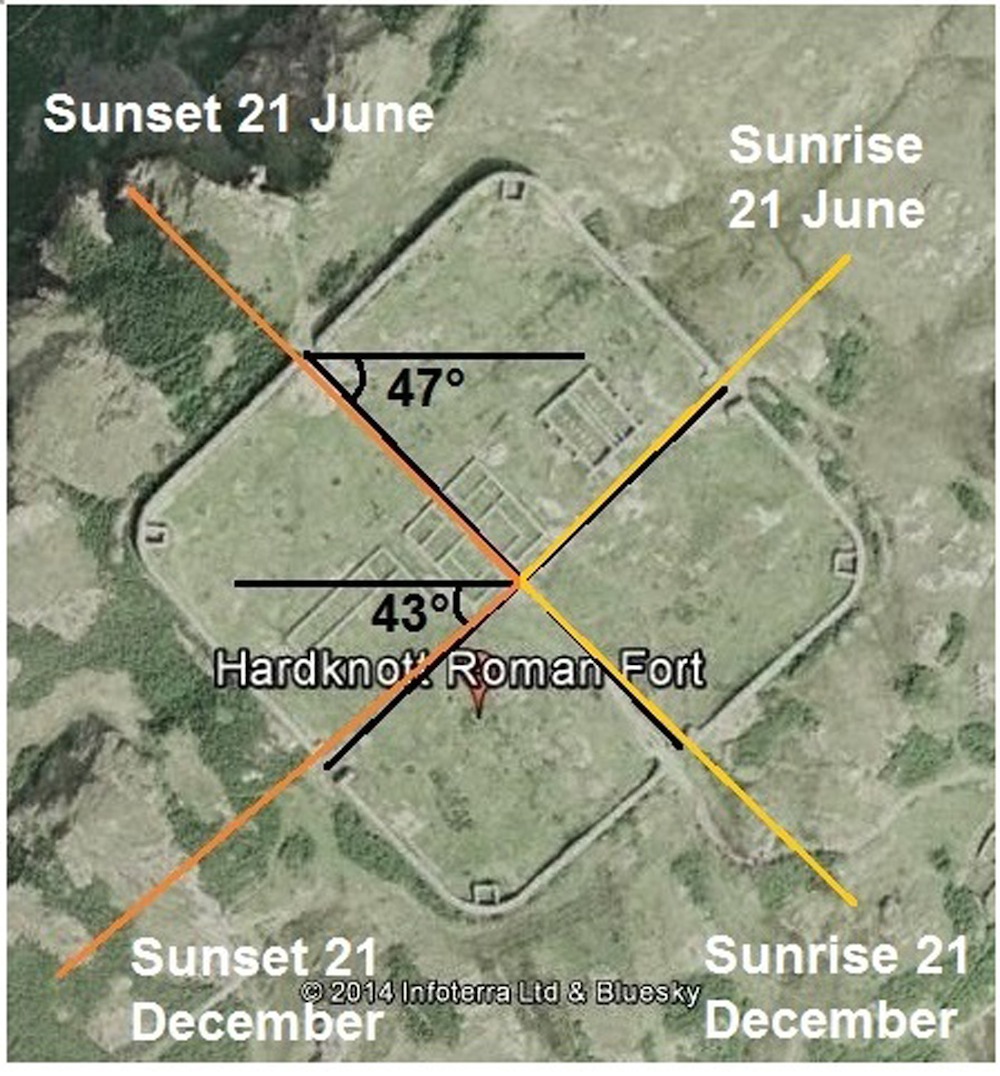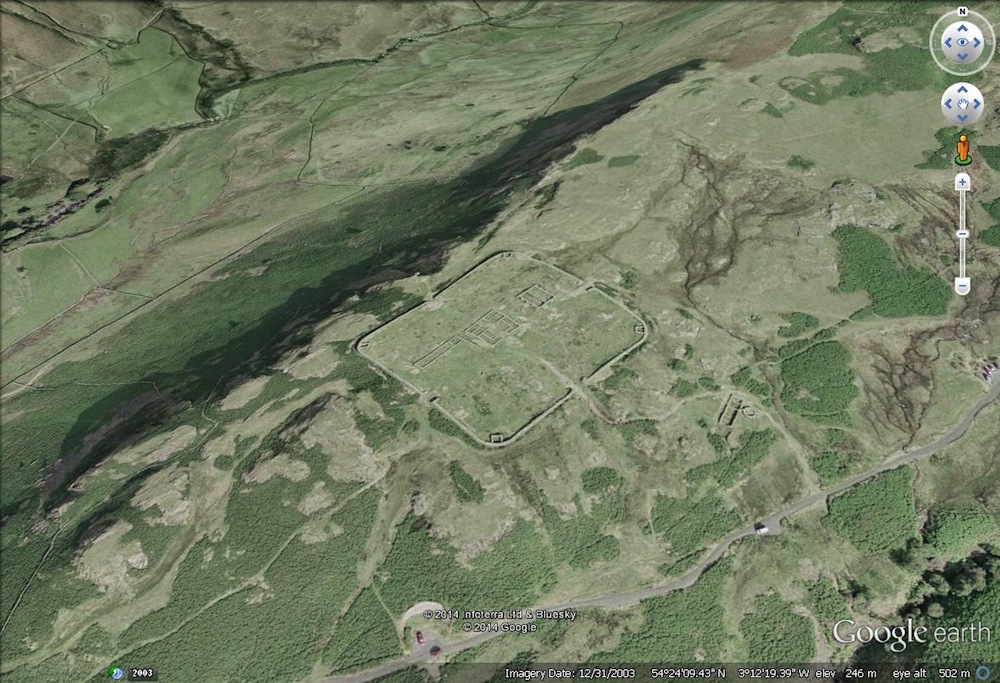Let in the Light: Ancient Roman Fort Designed for Celestial Show

The gateways of an ancient Roman fort in Britain are roughly aligned with the light from the sun during the summer and winter solstices — a design that would have resulted in a striking scene on the shortest and longest days of the year, a researcher says.
The fort had four gateways facing one another. During the summer solstice, the sun would rise in alignment with the fort's northeastern and southwestern gates, and set in alignment with its northwestern and southeastern gates, the researcher reported in the new study.
During the winter solstice, the sun would rise in line with the fort's southeastern and northwestern gates, and set in line with the fort's southwestern and northeastern gates. [In Photos: Amazing Ruins of the Ancient World]
"Moreover, the four towers of the garrison seem aligned to cardinal directions," Amelia Carolina Sparavigna, a physics professor at the Politecnico di Torino (Polytechnic University of Turin) in Italy, wrote in the study, published Dec. 17 in the journal Philica.

The fort's ruins are located near Hardknott Pass in Cumbria, England, and offer a commanding view of the sprawling Eskdale Valley. Built during the reign of Emperor Hadrian, who ruled from A.D. 117 to 138, the structure was part of a series of fortifications that once guarded the Roman frontier in Britain.
Sparavigna used online software to calculate the angles at which the solstice sun rises and sets at the fort. She then used satellite maps available on Google Earth to determine how the rising and setting solstice sun compares to the fort's features.
"This image is very interesting, because we can easily imagine the sun passing through the four gates on solstices," Sparavigna said.
Sign up for the Live Science daily newsletter now
Get the world’s most fascinating discoveries delivered straight to your inbox.
The summer solstice (which last occurred on June 21, 2014) represents the longest day of the year, when the sun appears at its highest point in the sky. The winter solstice (which last occurred on Dec. 21, 2014) represents the shortest day of the year, when the sun appears at its lowest point in the sky.

Sun gods?
But the reason for the fort's celestial alignment remains unclear. In her paper, and in an email to Live Science, Sparavigna noted that she is not an expert on Roman religion. However, she did offer some ideas that might help to explain the alignment.
"An orientation of sacred places to sun and sky is common to several religions," Sparavigna told Live Science in an email. It is "quite possible that the Hardknott fort has a symbolic homage to the sun," she said. "The god could be Sol, the ancient Roman god of the sun, which evolved [into] Sol Invictus (a deity whose name means "unconquered sun")."
Another possible link could be with Mithra, a god of light, "whose mysteries were a religion popular in the Roman army," Sparavigna wrote in the study. The worship of Mithra originated in Persia but became popular throughout the Roman Empire.
Sparavigna also noted that there are several Roman towns in Italy that have alignments with the solstice sun. Additionally, the town of Timgad, in northern Africa, is aligned with the direction of the sunrise on the birthday of the Roman Emperor Trajan, who reigned from A.D. 98 to 117.
Follow Live Science @livescience, Facebook & Google+. Original article on Live Science.

Owen Jarus is a regular contributor to Live Science who writes about archaeology and humans' past. He has also written for The Independent (UK), The Canadian Press (CP) and The Associated Press (AP), among others. Owen has a bachelor of arts degree from the University of Toronto and a journalism degree from Ryerson University.









